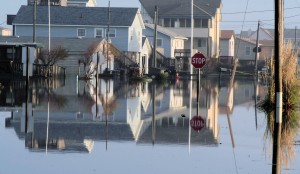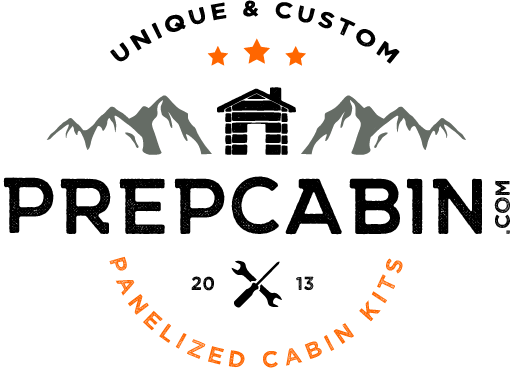 Often, prepping is seen as a lifestyle suited to the paranoid and extreme. But it’s normally a practical practice to help you and your family handle and survive situations that commonly happen in this world.
Often, prepping is seen as a lifestyle suited to the paranoid and extreme. But it’s normally a practical practice to help you and your family handle and survive situations that commonly happen in this world.
If you’ve ever doubted the need to be prepared for any and all disasters just take a look at what’s going on in Colorado and Mexico.
This week and weekend has seen unprecedented flooding in Colorado.
And Mexico is also experiencing massive flooding with a hurricane hitting it’s Pacific coast and a tropical storm slamming into it’s gulf / Atlantic coast. So far it’s reported that at least 20 people are dead as a result of these storms.
In Colorado with 5 confirmed dead, over 1,000 people still unaccounted for, 1500 homes destroyed and 17,500 homes damaged at this time it’s important to pray for those affected by and suffering from the massive flooding.
I first heard of the Colorado flooding through the news watching the rescue of Roy Ortiz who was trapped in his car – which was turned upside down in a rushing, washed out creek for over two hours.
See a video about his amazing rescue caught on film below:
Even if you live in a low flood risk area it’s important to be prepared for any and every disaster, and any area that receives rain can possibly flood.
Here’s what Ready.gov has to say about your flood risk:
“Even if you feel you live in a community with a low risk of flooding, remember that anywhere it rains, it can flood. Just because you haven’t experienced a flood in the past, doesn’t mean you won’t in the future. Flood risk isn’t just based on history; it’s also based on a number of factors including rainfall, topography, flood-control measures, river-flow and tidal-surge data, and changes due to new construction and development.”
What can you do to prepare for floods?
Here at Prepcabin.com we believe in emergency preparedness and flooding is a real risk that we evaluate and prep for.
The first thing you can do to prepare properly for flooding is to avoid living in areas that are prone to flooding or carry a high flood risk.
Moving or relocating may not be a possibility for you, and that’s okay. You can be prepared no matter where you live.
Here are some basic supplies and training to help you deal with flooding:
- Waterproof Emergency Rations: Like most disasters the food and water supply chain can be compromised, and with flooding existing food supplies can be quickly destroyed. Keep waterproof food and water in an easy to reach location.
- Waterproof Communication Devices: Many people are stranded during floods with no way to communicate their situation. A simple 2 way radio can let you signal for help if stranded in floodwaters. You can protect your devices with waterproof bags like the one I reviewed here: aLockSak (http://prepcabin.com/deal-or-dud-for-preppers-loksak-protective-bags/) An emergency radio can also inform you of evacuation routes and rescue operations. This information can save your life.
- Make a Family Communication Plan: Keeping your family safe and informed during a flood disaster is important. Since the infrastructure can be damaged during a disaster you should have a contact who lives in a different area to help you communicate with your local family and friends. It may be easier to make a long distance call, send a text, or an email than to call across town during a disaster. It’s important to let someone know you’re safe that can inform others. Make sure all members of your family have this contact information saved in their phones and on a laminated emergency card they keep with them.
- Emergency flotation devices may seem silly to have at home, but if you experience a flood it’s better safe then sorry. Life jackets commonly used for boating can be a lifesaver.
- A small boat can be a great resource during a flood. Whether it’s a small aluminum boat, kayak or inflatable it could help you reach safety. Be wary of any rising waters that aren’t calm waters. It’s easy to be swept away or capsized in rushing water.
- Find High Ground: It’s common to see picture of people stranded on their roofs during a major flooding event. This way you can get away from the rising waters and signal for help from rescuers. Have a plan to reach your roof, whether it’s from ladders or a window that can access your roof. Don’t wait until it’s to late to get out of the house and onto the roof. Waving bright colored materials can help you signal for help. Bright Orange rain ponchos should always be in your emergency kits!
Vehicular Safety During Flood Events
This is from http://www.ready.gov/floods and talks about the dangers of driving during flood disasters.
- Six inches of water will reach the bottom of most passenger cars causing loss of control and possible stalling.
- A foot of water will float many vehicles
- Two feet of rushing water can carry away most vehicles including sport utility vehicles (SUV’s) and pick-ups.
- Do not attempt to drive through a flooded road. The depth of water is not always obvious. The road bed may be washed out under the water, and you could be stranded or trapped.
- Do not drive around a barricade. Barricades are there for your protection. Turn around and go the other way.
- Do not try to take short cuts. They may be blocked. Stick to designated evacuation routes.
- Be especially cautious driving at night when it is harder to recognize flood dangers.
Flooding claims many lives every year, and being prepared for a flood can mean the difference between your families safety or a potential loss of loved ones.
Remember your life is more important than your belongings and if you need to evacuate to safety don’t waste any time. Pay attention to what’s going on during a flooding situation and take action!
Have you experienced a flood disaster? How did you handle it? If you have any tips for the community we’d love to know about them. Jump to the comments below to be heard!
Sources:
Youtube.com
Usatoday.com
Cnn.com
http://www.ready.gov/floods
